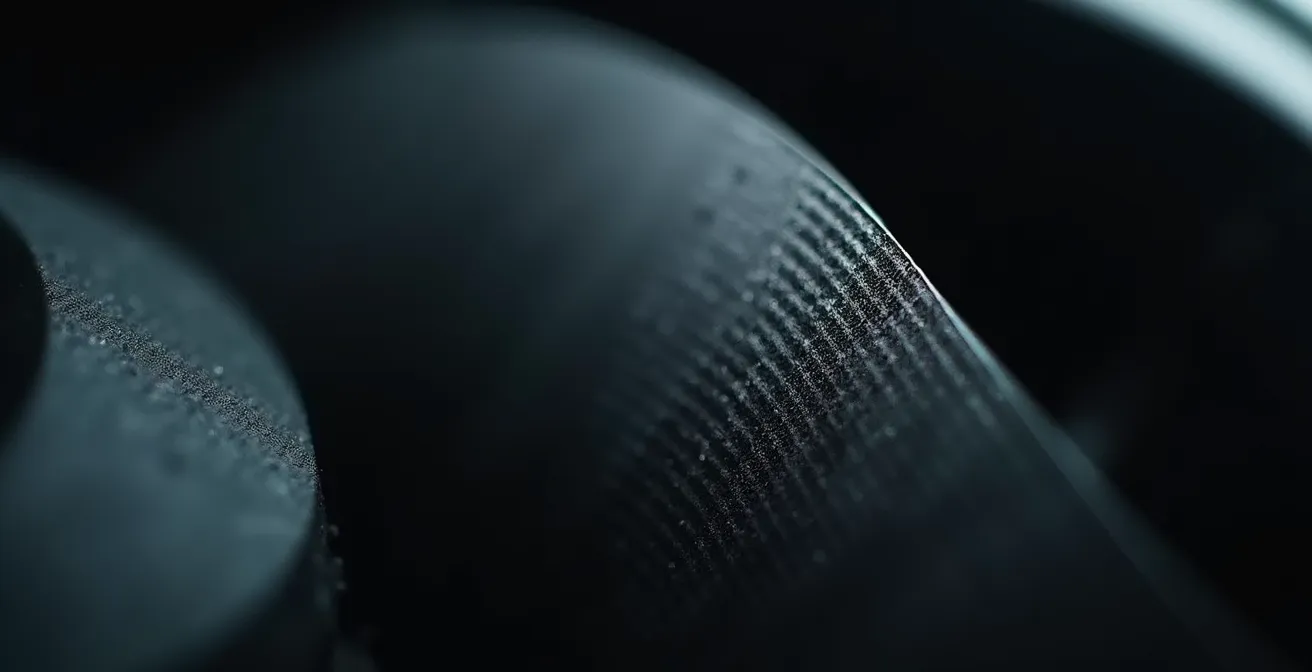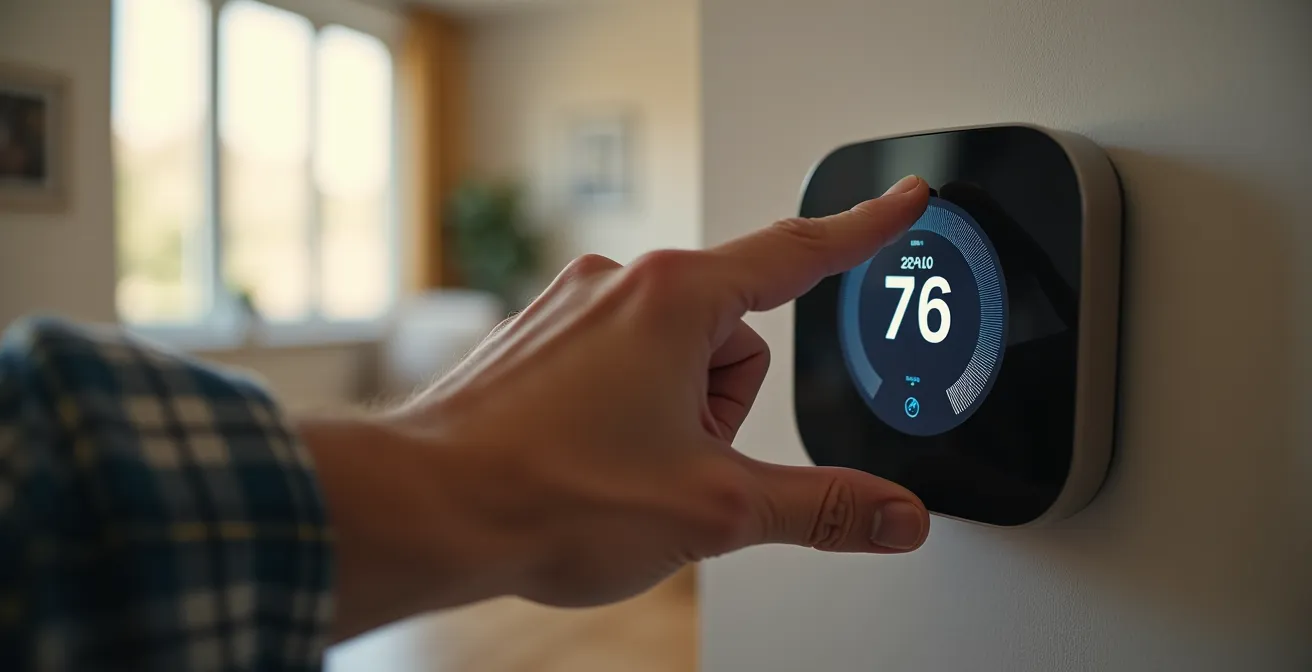Most homeowners recognize the obvious signs of HVAC failure: the system won’t turn on, or it’s blowing warm air in the middle of summer. But long before these catastrophic failures, your system sends out subtle distress signals—whispers of trouble that are often ignored. We grow accustomed to a gradual decline in performance, dismissing a new rattle as “just the house settling.” This tendency to overlook minor issues is the gap where efficiency is lost and expensive repairs take root.
The core truth of system failure is that it’s rarely sudden. It’s an accumulation of ignored whispers that finally crescendos into a roar. Understanding these early, nuanced warnings is the key not just to preventing a costly breakdown but to maintaining your home’s financial efficiency and air quality. For complex diagnostics and ensuring the longevity of your system, the expertise offered by professionals like those at ecoflowbc.ca becomes invaluable in translating these subtle signs into actionable solutions.
Decoding Your HVAC’s Early Warnings
- Recognize that subtle changes in sound, smell, and comfort are the first indicators of a problem.
- Understand how minor inefficiencies directly translate into higher energy bills and poor air quality.
- Learn which signs signal an immediate safety hazard versus those indicating component wear.
- Identify simple, actionable checks any homeowner can perform to gauge their system’s health.
Beyond the Obvious: When Your HVAC System Whispers Trouble Before It Roars
The most critical warning signs are often not loud or dramatic. They are gradual shifts in your home’s environment that you might subconsciously adapt to. Trusting your gut feeling—that a room feels stuffier than it used to, or the air seems heavier—is the first step in proactive maintenance. These subtle intuitions are often your first clue that the system is no longer operating at peak performance.
Beyond comfort, certain signals demand immediate attention due to safety risks. The smell of gas (like rotten eggs) near a furnace or the distinct odor of burning plastic or wires are emergencies. Likewise, any unusual electrical buzzing from the unit itself should never be ignored, as it can indicate a dangerous electrical fault. These are not whispers; they are clear alarms to shut down the system and call for professional help immediately.
Many early signs point to growing inefficiency rather than an imminent breakdown. These issues slowly strain components and inflate your energy costs. In fact, research shows that inefficient heating and cooling systems are a significant drain, with some studies indicating 12% of annual energy consumption is wasted by them. Recognizing these subtle performance drops is crucial for preventing a small problem from becoming a major expense.
Up to 40% of residential energy is consumed by heating and cooling systems.
– U.S. Department of Energy, Energy Information Administration
Efficiency standards for HVAC systems are continuously updated to combat this energy waste. Understanding these changes highlights the performance gap that can develop between an older, failing unit and a modern one.
| Year | Minimum SEER (North) | Minimum SEER (South) |
|---|---|---|
| 2015 | 13.0 | 14.0 |
| 2023 | 14.0 | 15.0 |
Before any major signs appear, you can perform a few simple checks to gauge your system’s baseline performance.
Early Performance Checks
- Step 1: Monitor gradual temperature drift in different rooms.
- Step 2: Listen for low-level electrical buzzing near the unit.
- Step 3: Smell for faint gas or musty odors during operation.
- Step 4: Track subtle increases in monthly energy bills.
Decoding HVAC’s Distress Signals: What Specific Sounds and Smells Mean
Your HVAC system communicates through a language of sounds and smells. Learning to interpret them is key to diagnosing problems early. Not all noises are cause for alarm, but new or unusual sounds warrant investigation. These can often be categorized to pinpoint the likely source of the issue.
What does a banging sound from my furnace mean?
A loud banging or popping noise, especially when the furnace kicks on, often indicates dirty burners or delayed ignition, a potentially serious issue that requires professional inspection.
Common distress signals include:
- Banging or Popping: Often related to burner ignition issues in gas furnaces.
- Rattling: Could be as simple as loose debris in the ductwork or a failing motor.
- Squealing or Screeching: This high-pitched noise frequently points to belt or bearing problems within the motor assembly.
- Hissing: A hissing sound can indicate a refrigerant leak, which harms both your system’s efficiency and the environment.
A high-pitched squeal often indicates a worn blower belt or bearing failure.
– ASHRAE Handbook, American Society of Heating, Refrigerating and Air-Conditioning Engineers
Ignoring these audible warnings is a significant gamble, as data suggests mechanical failures preceded by abnormal noises account for 25% of cases that could have been mitigated with earlier intervention.
A visual inspection of accessible components, like the blower belt, can sometimes confirm what your ears are telling you. A worn, frayed, or cracked belt is a clear sign that a key part is nearing the end of its life and is the likely source of any squealing sounds.

This kind of hands-on diagnosis, guided by sound, can prevent a complete system breakdown. Identifying the source of a noise and addressing it promptly saves both money and the inconvenience of an emergency repair, transforming a potentially major failure into a simple parts replacement.
Motor Bearing Failure Diagnosis
An HVAC technician detected early bearing wear by identifying a subtle squealing sound, preventing motor burnout and saving $1,200 in repairs.
The Hidden Costs of HVAC Neglect: How Small Issues Drain Your Wallet and Home’s Health
The most immediate consequence of neglecting HVAC maintenance is financial. A system that is not running efficiently works harder to produce the same results, consuming more energy in the process. Something as simple as a clogged air filter can force the system to run longer and more frequently, leading to a noticeable jump in your monthly bills. This can often result in as much as a 15% increase in utility bills before a homeowner even realizes there’s a serious problem.
This isn’t just theoretical; it’s a common experience. As one homeowner noted after overlooking filter changes for too long, their ” energy bill jumped by nearly 20%.” This direct financial impact underscores how a minor maintenance task is directly tied to household expenses.
Beyond costs, a poorly performing HVAC system can degrade your home’s indoor air quality. Clogged filters fail to trap dust, pollen, and other particulates, allowing them to circulate freely throughout your home. In humid climates, a struggling air conditioner can lead to excess moisture, creating an environment ripe for mold and mildew growth. This directly impacts the health and well-being of your family.
The relationship between filter cleanliness, airflow, and energy consumption is direct and measurable. As a filter becomes more clogged, airflow is restricted, forcing the system’s fan motor to work harder and consume more power to circulate air.
| Filter Condition | Airflow (%) | Energy Usage Increase (%) |
|---|---|---|
| Clean | 100 | 0 |
| Semi-Clogged | 85 | 10 |
| Clogged | 60 | 25 |
Regular, preventative maintenance is the most effective strategy to avoid these hidden costs. A simple schedule of checks and professional tune-ups can keep your system running efficiently and safely.
Preventative Maintenance Steps
- Step 1: Replace air filters every 90 days or sooner if recommended.
- Step 2: Inspect coils and clean annually before peak season.
- Step 3: Schedule professional tune-up every 12 months.
- Step 4: Monitor refrigerant levels and check for leaks.
Key Takeaways
- Subtle sensory cues like odd smells or faint noises are your earliest and most valuable HVAC warning signs.
- Ignoring minor issues like clogged filters directly leads to higher utility bills and poor indoor air quality.
- Sounds like squealing often point to specific mechanical issues, such as belt or bearing failure.
- Regular DIY checks and annual professional maintenance are crucial for preventing costly emergency repairs.
Smart Homeowner Checks: Simple Observations to Gauge Your HVAC’s Health
While some issues require professional tools, any homeowner can perform simple observational checks to monitor their HVAC system’s health. These routine inspections can catch problems early, before they escalate. Start with the most accessible components: check your air filter monthly and ensure vents and registers throughout the house are open and unobstructed.
Your thermostat is the brain of the operation, and its behavior can reveal a lot about the system’s condition. Pay attention to its accuracy and responsiveness. If you set it to 72 degrees, does the room actually feel like 72 degrees? Does the system turn on and off erratically, or does it run in smooth, consistent cycles?

A frequent on-and-off pattern is a significant red flag. This rapid on-off pattern, known as short-cycling, is more than an annoyance; it can reduce system lifespan by up to 30% due to the excessive wear on the compressor and other components. It can be caused by anything from an oversized unit to low refrigerant levels. If these basic checks reveal inconsistencies, consider hiring a professional service for a more thorough diagnosis. You can also Learn About Hiring Professionals to understand what to expect.
DIY HVAC Inspection Checklist
- Inspect and replace air filter.
- Check visible ductwork for leaks or damage.
- Observe thermostat readings for accuracy.
- Listen for unusual cycling patterns.
Even small adjustments based on these observations can have a significant impact on both comfort and efficiency, as seen in commercial settings where precise temperature control is vital.
Thermostat Calibration Impact
Employees at a small clinic recalibrated their thermostat and saw uniform temperature distribution restored, reducing patient complaints by 80%.
Frequently Asked Questions on HVAC Maintenance
How often should I change my HVAC air filter?
For most standard 1-inch filters, every 90 days is a good rule of thumb. However, if you have pets, live in a dusty area, or have family members with allergies, you should check it monthly and replace it as needed.
What’s the difference between a strange noise and a normal operational sound?
Normal sounds include the gentle hum of the fan and the initial click when the system starts. Strange noises are those that are new, sudden, or loud, such as banging, screeching, rattling, or grinding. Any sound that you haven’t heard before warrants an investigation.
Can I fix minor HVAC issues myself?
Homeowners can safely perform basic maintenance like changing air filters, cleaning vents, and checking the thermostat settings. However, any issues involving electrical components, refrigerant, or mechanical parts should be left to a qualified professional due to safety risks and the need for specialized tools.
Is a professional HVAC inspection really necessary every year?
Yes, an annual tune-up is highly recommended. A professional can clean internal components, check refrigerant levels, test electrical connections, and identify worn parts before they fail completely. This preventative service improves efficiency, extends the system’s lifespan, and can prevent costly emergency repairs.
